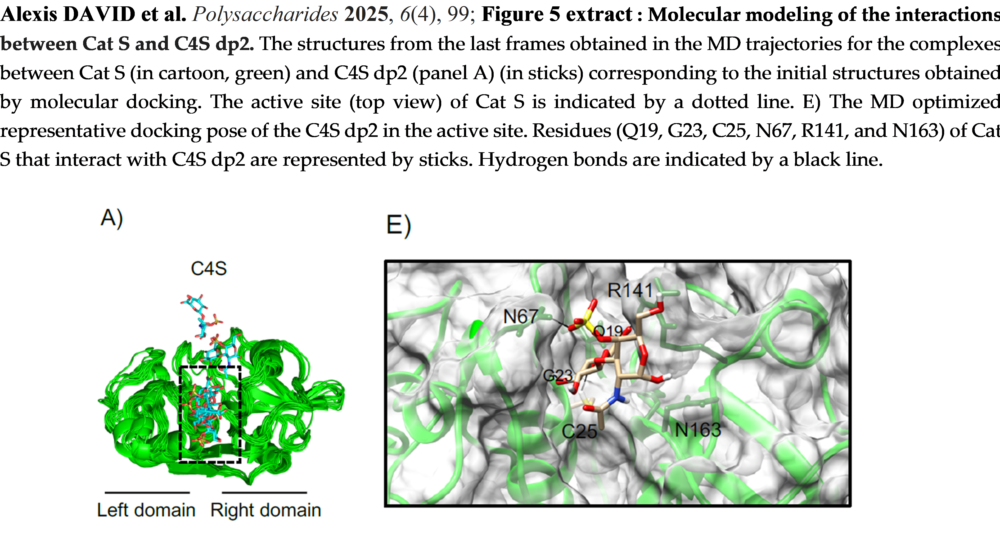Collagens : a fascinating family
Sylvie Ricard-Blum
The collagen family comprises 28 members in mammals and its diversity is increased by the use of alternative promoters for some collagen genes, alternative splicing (e.g. collagen XIII) and the existence of several molecular isoforms for some collagen types (e.g. collagens IV and V). Collagens are trimeric molecules. The collagens are divided into subgroups based on their supramolecular assemblies: fibril-forming collagens, FACITs (Fibril-Associated Collagens with Interrupted Triple helices), network-forming collagens, beaded filaments and anchoring fibrils. Collagen fibrils are macromolecular alloys made of several collagens and of proteoglycans at their surface. They are stabilized by covalent cross-linking mediated by enzymes of the lysyl oxidase family. These supramolecular assemblies play a structural role in the organization of the extracellular matrix and confer mechanical properties (e.g. resistance to traction) to the tissues. Although the vast majority of collagens are found in the extracellular matrix, four collagens (XIII, XVII, XXIII and XXV) are transmembrane proteins.
All the collagens contain at least one triple-helical domain (10 to 96% of the molecule length). The FACITs and the multiplexins (multiple triple-helix domains with interruptions) subfamilies contain several triple-helical domains interspersed with non-collagenous domains. Von Willebrand Factor A, fibronectin III and thrombospondin domains are some non-collagenous domains found in collagens. In addition to their structural roles, collagens modulate cell behavior (proliferation, migration, adhesion) via several receptor families (integrins, discoidin domain receptors, glycoprotein VI and Leukocyte-Associated Immunoglobulin-like Receptor-1). New functions such as wiring of the central nervous system have been recently reported for non-fibril forming collagens, some of them being expressed by neurons. Collagen XIII plays a role in the regulation of neuromuscular junction, several alpha chains of collagen IV are required for synapse maintenance and collagen XVIII regulates axon outgrowth. Furthermore, several collagens are a source of bioactive fragments called matricryptins, which exhibit anti-angiogenic and anti-tumoral properties after release from the parent collagen molecule by proteases.Since biological functions are mediated by molecular interactions, the identification of new interactions should predict additional functions for collagens. We developed protein and glycosaminoglycan arrays probed by surface plasmon resonance imaging (SPRi) to identify new partners of collagens. We built a database to store extracellular interaction data (MatrixDB, http://matrixdb.ibcp.fr/) and to build interaction networks of a tissue, a biological or a pathological process. Kinetics and affinity of the interactions were calculated by SPR, whereas binding sites were determined by site-directed mutagenesis or predicted by molecular modeling. The integration of all these parameters provided dynamics to the networks where interactions were prioritized according to affinity, and where simultaneous interactions were discriminated from the sequential ones according to the localization of binding sites. Protein domains and intrinsically disordered regions (able to interact with numerous partners due to their structural plasticity) were also mapped to the network. These approaches were applied to the study of the C-terminal fragment of collagen XVIII, endostatin, which is an anti-angiogenic matricryptin. They allowed us to predict new biological roles for endostatin in host-pathogen interactions, Alzheimer’s disease and innate immunity. Furthermore, this integrative approach, taking into account all the partners of endostatin and their interactions, provided new clues on the molecular mechanisms underlying its anti-angiogenic functions.
- Faye C, Chautard E, Olsen BR, Ricard-Blum S. The first draft of the endostatin interaction network. J Biol Chem 2009 284:22041-7.
- Chautard E, Fatoux-Ardore M, Ballut L, Thierry-Mieg N, Ricard-Blum S. MatrixDB, the extracellular matrix interaction database. Nucleic Acids Res 2011 39:D235-40.
- Ricard-Blum S. The collagen family. Cold Spring Harb Perspect Biol. 2011 3:a004978.
- Ricard-Blum S, Ballut L. Matricryptins derived from collagens and proteoglycans. Front Biosci 2011 16:674-97.
- Peysselon F, Xue B, Uversky VN, Ricard-Blum S. Intrinsic disorder of the extracellular matrix. Mol Biosyst 2011 7:3353-65.
